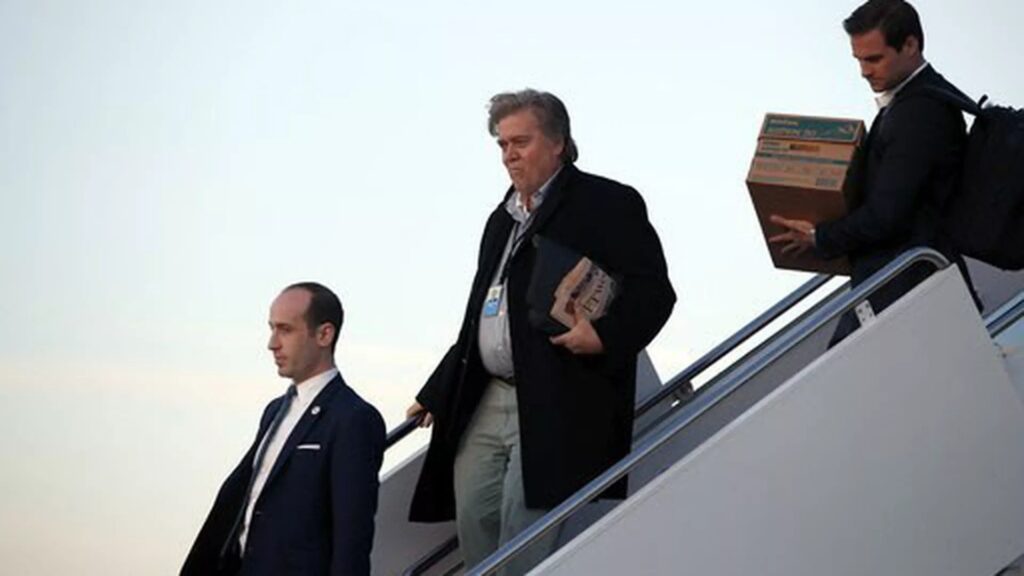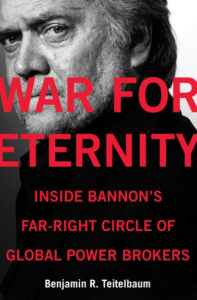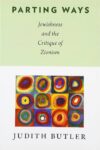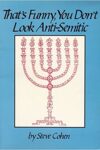This essay was first made available last month, exclusively for our Patreon supporters. If you want to support Full Stop’s original literary criticism, please consider becoming a Patreon supporter.

The monks of the earliest days had not counted on the human ability to generate a new cultural inheritance in a couple of generations if an old one is utterly destroyed, to generate it by virtue of lawgivers and prophets, geniuses or maniacs; through a Moses, or through a Hitler, or an ignorant but tyrannical grandfather, a cultural inheritance may be acquired between dusk and dawn, and many have been so acquired.
– Walter Miller, A Canticle for Leibowitz
Storming from the Ice Age/They were last in line/They would start a new age/If they could just tell time!
– GWAR, “Penguin Attack”
In February 2017, word started getting around about Trump campaign manager Steve Bannon’s strange reading habits. Bannon, it seems, read (or anyway name-checked) a lot of weird stuff, but the name that kept coming up was that of Julius Evola. Evola was an Italian occultist fascist who wrote extensively about a range of topics, from race to sex to mountain climbing to what amounts to self-help, between the 1920s and the 1970s. Content-dispensers gave short primers on who Evola was and why we should be concerned that a man close to Trump (for the time being) was reading him.
Just like that, the obscure and abstruse world of Traditionalism — with a capital T — surfaced into view for the readers of the Times and the Atlantic. They could choose to contain their knowledge to the capsule review of Evola. They could easily enough dismiss the whole thing a few short months later when Bannon fell from Trump’s graces, thereby losing much of his power. Or they could keep paying attention, find Traditionalism popping up in odd areas again and again. If they retained interest into the third decade of the twenty-first century, they could read ethnomusicologist Benjamin Teitelbaum’s War For Eternity, a journalistic work on Bannon, Traditionalism, and why you should care about both.
Knotty definitional issues impede description of Traditionalism and its place in both the historical and the contemporary right. It’s easiest to take the matter one step at a time from the beginning. The period between the 1870s and the First World War saw an intellectual and cultural revolt against Victorian rationalism and optimism spread in many elite circles in Europe and North America. This took many forms, from new departures in art to political revolt on both the left and the right to an embrace of the spiritual and the occult on the part of many. One product of this time of ferment was Traditionalism. Traditionalism emerged out of occultist circles in early twentieth-century Europe. The Traditionalists believe that there is a single unified Tradition, a cluster of universal wisdom and lore that once held all humanity together in harmony. This Tradition is the font of everything true in all religions (the sort of cafeteria spirituality one sees is often lightly Traditionalism-inflected). The Tradition was sundered, somehow, and mankind experienced a fall. The only way to improve as individuals or as societies is to get back in touch with the Tradition.
The Tradition, for the first generation of Traditionalists (including Evola) had little to do with, say, the folkways of the peasantry or how things were before industrialism. The Tradition is more or less a mish-mash of Western esotericism and Eastern spirituality as understood through the lenses of late nineteenth/early twentieth century orientalism. Most Traditionalists thought (and think) that movement along the hierarchy from our debased non-spirituality to the peaks of Tradition must be stage-based and initiatory. Traditionalism is proudly elitist, in the sense of believing in a restricted spiritual elite, though defenders make much of the differences between this spiritual elite and our actual power elite (a consequence of our fallen age, according to Traditionalists). This also means that to become a Traditionalist, you need a guide through the initiatory path, and the Traditionalists squabbled amongst themselves as to who had access to the true path and the true knowledge.
In terms of political valence, you can split the Traditionalists in two, each following the example of a major Traditionalist thinker. Rene Guenon was a French Traditionalist who encouraged a quietist elitism and a retreat into Orientalism — Islam and Hinduism contain more of the spark of the original Tradition, in Guenon’s telling. From Hinduism, Guenon and later Traditionalists borrowed the idea of a four-part spiritual/sociological hierarchy of society: priests on the top, followed by warrior-aristocrats, then merchants, and at the bottom common laborers. Time itself followed this pattern in his telling, starting with a Golden Age of spiritual enlightenment when the Tradition was one and priests ruled, followed by a Silver Age of rule by warriors, into a Bronze Age of merchant rule and finally on to the Iron Age or Dark Age of rule by commoners. In case there was any doubt, by Guenon’s time, we were either already in the Iron Age or well on our way to it, depending on which Traditionalist you asked. Guenon himself became a Sufi mystic, a path numerous Traditionalists have trod after him, some into cult guru-hood, some into academics, most into quiet reflection.
On the other hand, you have the path of the aforementioned Julius Evola. Evola never fit in neatly with the Italian Fascist regime, but this was in large part because it was too moderate for him. Evola wanted it more extreme, more aristocratic, more racist. Evola’s defenders claim that his elitism was strictly spiritual, but he made clear in his writings that Aryan blood was necessary to access the Tradition, even if it wasn’t enough on its own. Evola helped create Italy’s 1938 antisemitic laws. He held that Jews were largely responsible for the fall from Tradition’s Golden Age and towards an anti-spiritual Age of Iron. This was the probably-inevitable response to the inevitable question all conservatives face: “if things were so great in the past, why did anything change?” Evola’s model for a future for Europe was Hitler’s SS; an initiatory order defined by both Aryan blood and exalted consciousness of the “spirituality” of race. Evola brought an abhorrence of mixture into Traditionalism which merged seamlessly with the ideology’s emphasis on hierarchy.
There exist esoteric reasons for all this, in the tradition of ideological pedants. Evola’s mythological history of the descent from Golden to Iron Age in his magnum opus, Revolt Against the Modern World, is riddled with epicycles and asides backed by pseudo-erudite reconstructions of aspects of both Western and Eastern esoterica. The image of a buffoon like Bannon, let alone the numerous Gen-Z teens claiming to be Traditionalists, wading through this prose-morass is an amusing one to anyone who has done it themselves. But there was a practical upshot to Evola’s rearrangement of Tradition: Rene Guenon believed that priestly retreat from the world was the way to wisdom; Evola believed in a melding of the roles of priest and warrior, with the truly enlightened taking an active role in the world. Practically speaking, this meant Traditionalists with a taste for real-world power follow Evola, though they may pay respect to Guenon as a wise man.
Fascist politics after the downfall of the Fascist and Nazi regimes were largely a game of last man standing. Figures and tendencies which were too obscure or marginal in actual fascist regimes to be either punished or rehabilitated by the Allies became rallying points for the far right. This included the tendency of Strasserism, after early Hitler partner Gregor Strasser, who emphasized the “socialist” in “national socialist” and had been sidelined (and murdered) as a consequence when Hitler cuddled up to big business on seizing power. It also included Evola. Evola was still alive after WWII (unlike Strasser) and the very fact that his occultism and tendency to pick fights rendered him a liability to Mussolini’s regime made him an asset in the postwar reassemblage of fascism. The neofascist terrorists who, along with leftist groups like the Red Brigades, made Italy so lively during the Years of Lead in the 1970s were fans of Evola’s. An Italian cop was once reported to have said that finding copies of Evola’s books in a searched flat was as damning as finding plastic explosives. Evola’s take on Traditionalism continues to inspire violent fascists to this day.

Where does Steve Bannon enter into this? According to Teitelbaum, through the unlikely portal of the New Age bookstore. Apparently, as a young man, Bannon was a classic Baby Boomer spiritual seeker, and frequented the spirituality section of many a bookstore, even as a young Navy officer. There, he encountered the works of Guenon, Evola, and other Traditionalists in editions from publishers like Inner Traditions (of Vermont, naturally). These were credulous hippies publishing occultist fascists with various weak excuses (now there are new fascist presses like Arktos who carry on this tradition).
How is the supposed populist Steve Bannon supposed to take on board the teachings of the proudly elitist Traditionalists? Is this just another instance of Republican hypocrisy, the sort of thing Jon Stewart made a living off of? Not quite. Traditionalism places myth above history. Evola gives a whole “history” of humanity in his keystone work, Revolt Against the Modern World, based on mythology and with pointed disregard for facts, starting with the coming of the Aryans from an arctic “Hyperborean” homeland. As it turns out, that sort of intellectual Calvinball can be played any number of ways.
One of the basic aspects of first-generation Traditionalism is that the Tradition does not come from the traditions (small-“t”) of any given culture or nationality. Bannon, in classic finance-guy form, pulls the rug out from under this basic supposition and proposes that Tradition and tradition are actually the same: that the old folkways of any given people (leaving aside the definitional problems with “folkways,” “people,” and even “old”) are the Traditional path they are called upon to walk to seek out a new Golden Age. “Tradition” the way Bill O’Reilly would mean the term — “traditional” marriage, “traditional” respect for “law and order,” “traditional” holiday celebrations, so on and on — counts, in Bannon’s telling, as capital-T Tradition, backstopped by the cosmic order. For Bannon and his followers among American Traditionalists, this is true even when (as in the case of, say, “traditional” Christmas celebration) you can easily trace a given tradition’s quite recent historical roots. Teitelbaum goes so far as to call Bannon’s ideology “post-Traditionalism.” Or, as Bannon himself put it in an interview with Teitelbaum, “I’m just some fuckin’ guy, making it up as I go.”
This conflation — high existential (to say nothing of high fantasy) seriousness with carnival-barker con-man bullshitting — is everywhere in Traditionalism. Bannon may be the ne plus ultra but he by no means originated the combination. There’s no reason to take Evola or Guenon’s myth-history any more or less seriously than Bannon’s. If anything, the “traditions” Bannon upholds have a more concrete existence — even as decidedly contingent concepts rooted in very known human history — than the gauzy mythoi found in Revolt Against the Modern World or other, purportedly more serious, Traditionalist texts.
Bannon’s game, in Teitelbaum’s telling, appears to be bolstering his notion of Traditionalism — his “Post-Traditionalism” where the supposed ethos and folkways of a given “civilization” represent the highest available truth for members of said civilization — globally through creating connections with assorted right-populists. As it turns out and as Teitelbaum documents, he’s not the only Traditionalist to have the ear of powerful right-wing political figures. Brazil’s Jair Bolsonaro nearly appointed one Olavo de Carvalho to the post of Minister of Education. De Carvalho is a Traditionalist newspaper columnist in his native Brazil and a YouTube ranter, distinguished from dozens of adolescents doing the same schtick by his Portuguese language and official connections. And of course there’s Aleksandr Dugin, a Russian Traditionalist who went from “National-Bolshevik” (think Stalinism with the anti-semitism turned up to 11 and punk rock ‘tude slathered on generously) dissident to ultra-Orthodox influencer on Russian geopolitical/military strategy, and frequent guest on Russian state TV.
What do Bannon, de Carvalho, and Dugin have in common, beyond having read some of the same Traditionalist screeds and having the ear (however tentatively) of major right-wing world leaders? Benjamin Teitelbaum tells of something like an underground war, where billionaire-backed Traditionalist sects attempt to advance their influence and lead the world towards a new Golden Age through the influence of elites, appropriately enough given Traditionalism’s elitism. Geopolitics as a field is catnip for Traditionalists and others attracted by the high-end and fatuous. The, to put it charitably, imaginative flights of high-level geopolitical thinking, with its disregard for ground-level political details (as seen in the US War on Terror) match up serendipitously with the similarly cavalier disregard for fact in favor of vision one sees in Traditionalism.
There are enough fatuous rich people and political players in this world to give a seat at or near the big Risk board of geopolitics to some Traditionalists. Indeed, Bannon is backed by a Chinese anticommunist billionaire in his efforts to build a western populist alliance (with China, godless and communist in his telling, as its enemy). Dugin, for his part, is something of a house philosopher for the China-Russia alliance, seeing both as continental, traditional powers against the subversion of the typically sea-borne powers of Anglo-America. How much any of this matters, how much it extends beyond window-dressing for power politics, is up for debate. Teitelbaum at times breathlessly tracks meetings and contact between Bannon, Dugin, de Carvalho, their respective chiefs, other right-wing leaders such as those in Hungary’s Jobbik party, neo-nazis and cranks of all kinds. But he’s not so breathless as to claim that Traditionalism is at the seat of power — just hovering dangerously close to it, and influencing those with power.
What does seem to matter in the strange story of twenty-first century Traditionalism are the ways in which myth comes to displace history. Bannon hit upon something when he tried to make one-hundred-per-cent-Americanism a metaphysics. Millions of Americans treat the mores and institutions of mid-twentieth century America — the greatness to which America should go back, hazily placed somewhere between the 1950s and 1980s and even the W. Bush era — as metaphysical properties of the universe. This extends from economic structures (the supposed return of manufacturing) to housing arrangements (the single-family nuclear household) to policing (the idea that we all love and respect the police, other than wrong-doers) to the aforementioned holiday celebrations. None of these “traditions” are especially old. As the joke goes, it’s not “traditional marriage” unless land or livestock changes hand in the dowry, no matter what gay marriage opponents say. The Puritans despised Christmas celebration, and Santa Claus was a German import, his image perfected by Currier and Ives and generations of Coke commercials. Further examples abound.
All of this is about as historical as Evola’s Hyperborean mythology. So, indeed, why not take it that one step further and make our spurious traditions into Tradition, in the perennial-mystical-truth sense that Traditionalism upholds? That intellectual maneuver is what Bannon is attempting to get over. This is why he and Trump got on so well for as long as they did. Trump’s vision of a lost American golden age isn’t that different from Bannon’s, nor his list of enemies: “globalists,” the managerial elite, the “deep state,” and so on. Conservatism increasingly relies on myth, just as Traditionalism does. Moreover, what on Earth could “tradition/Tradition” otherwise mean in societies whose histories are as thoroughly determined by modern happenings as Bannon’s America, de Carvalho’s Brazil, or Dugin’s post-Soviet Russia?
Like any magician, Traditionalists rely on sleight of hand, in their case rhetorical rather than prestidigitational. First-generation Traditionalists such as Guenon and Evola worked in a context of endless “discoveries” (largely thanks to colonialism) extending the European vision of the world both in space and in time. Despite seeing modernity as the enemy of Tradition, Traditionalism took part in a modernist project of self-definition. In their instance they did so by using a cherry-picked set of gleanings from the past and from mythology, most of it newly available to scholars and ideologues thanks to then-recent methodological advances such as archival historical research and comparative religious studies. Take their appropriation of the Hindu caste structure, opting for the relatively unimportant Vedic four-way priest-warrior-merchant-worker divide which appealed to their sensibility and leaving the realities of the caste system, a massive and still-lived tradition with its uncountable divisions and rules, aside. This was made possible by the studies of Orientalists and their example in creating aesthetically-pleasing (to them anyway) pastiches of “the East.”
For the twenty-first century Traditionalist à la Bannon and Dugin, the sleight of hand consists in directing young curious right-wingers on what’s meant to be a spiritual journey, which winds up reconfirming what every American and/or Russian meathead already thought about the world from the cradle. If first-generation Traditionalism played using the tools of their supposed enemies, the modernists, Bannon and company are well into the territory of their notional archenemy, postmodernism, with its constructed realities and emphasis on surface rather than depth.
Magicians (and con men) also generally rely on the complicity of their marks — on the will to believe. This is especially poignant in the case of the Traditionalist teens one can find online, a subsection of what a few years ago was called the “alt-right.” With them, the conflation between big-T and small-t T/tradition reaches a seamless completion. Those who grew up in the utterly ahistorical space of exurbs or nth-generation suburbs are more vulnerable than most to myth-history. Traditionalism always incorporated fantasy. Twenty-first century Traditionalism includes fantasy in several senses of the word: the fantasy of a universal mystical Tradition; the fantasy that this Tradition has anything to do with the “traditions” of a given culture; the notion that American (or indeed, at this point, most global) “traditions” are especially old or venerable; the power fantasies of frustrated youth; and perhaps most novel, fantasy as a genre. Imagery and concepts from anime, Dungeons and Dragons, and war game Warhammer 40k enter powerfully into the online Traditionalist imaginarium.
Indeed, gaming is a powerful metaphor for Traditionalism. Most games about conflict rely on there being multiple, separate, mutually discrete factions for players to belong to — the Humans, Orcs, and other fantasy races of World of Warcraft, say — that have varying attributes but, to keep the game balanced, are all roughly equal in terms of ability to play the game. This is roughly how Traditionalists and many other contemporary nationalists see nations and/or “civilizations”: discrete, unmixed units of culture that compete for about as much reason as one finds in any Warhammer 40k tournament. Anything that threatens to unsettle such an order — internationalism, the overweening power of any given potential hegemon, or just a working knowledge of actual history — can be lumped into “modernity,” a scheme of the “cultural marxists” to undo Tradition/tradition. One wonders if Bannon’s bookstore wanderings (or investment portfolio) have taken him into the gaming space.
Benjamin Teitelbaum had unrivaled access to the actors attempting to bring Traditionalism, however conceived, into the political realm: Ovalho de Carvalho, Aleksandr Dugin, and most of all Steve Bannon. An ethnomusicologist by training, Teitelbaum had first encountered Traditionalism when investigating the far-right black music scenes in Scandinavia. He expresses the shock and bemusement that those of us who knew of Traditionalism pre-2017 felt as names like that of Evola suddenly cropped up in the news. Moreover, many of his sources were equally incredulous. His stories, related in War for Eternity (in chapters only loosely connected to Bannon, the book’s notional subject) of right-wing publishers and “thinkers” like Jason Reza Jorjani attempting to wheedle their way into power positions and getting scammed in the process have a certain Coen Brothers comedy element to them. Towards the end of the book, John Morgan, editor of fascist blog/publisher Counter Currents, wistfully looks back on the moment between Trump’s election and the Unite the Right violence in Charlottesville as a lost era of possibility for his particular clade of the right.
Where does that leave us, in terms of Traditionalism and the current moment? Traditionalism only ranks in the low-popularity tranche of assorted elite ideologies that cover for destruction and self-dealing, ranging from the Washington Consensus to plain old default nationalism. Putin didn’t need Dugin’s (enthusiastically given) support to annex Crimea, Bolsonaro doesn’t need de Carvalho to tell him to scapegoat the LGBTQ community, and Trump didn’t turn out to need Bannon for much of anything.
Why, then, is Traditionalism worth anyone’s attention, beyond the joys of rubbernecking at ideological car crashes? It’s the old but continually relevant story of the decay and escapism of the elite. Decades of secession on the part of the elite from the rest of society, represented in macroeconomics by the decoupling of productivity and wage growth, has produced an upper class addicted to fairy tales and mythology. These run from Ayn Rand’s Objectivism (remember when Rand Paul was a bogeyman in his own right, and not an errand boy for Trump?) to liberal fables of meritocracy (one could imagine a liberal Tradition with ritual viewings of “Hamilton” as part of the initiation process) to the seemingly bipartisan fantasy of prepping for doomsday in your very own bunker, perhaps in New Zealand. This dross of figments filters downwards into the lower socioeconomic strata where you find those inveigled by the myth of American exceptionalism that American Traditionalists see as the base for their project. Arguably, it was ever thus. Was the American exceptionalism of the Cold War generation any less mythological? Were our elites ever possessed of a realistic understanding of the society they purported to run? But one can’t help but think that the myths have started to feed off of themselves, generating new and stranger myths, attracting ideological adventurers like Bannon who think they can feed off the process. As a mass movement, Traditionalism is a failure, as seemingly every Traditionalist other than Bannon, with his dreams of harnessing America’s endless self-regard and appetite for self-serving mythology, acknowledges. But as a cult preoccupation, we probably haven’t seen the last of it, or stranger ideas yet.
Peter Berard is a writer and organizer who lives in Watertown, Massachusetts. You can follow his work via his newsletter, peterberard.substack.com.
This post may contain affiliate links.







